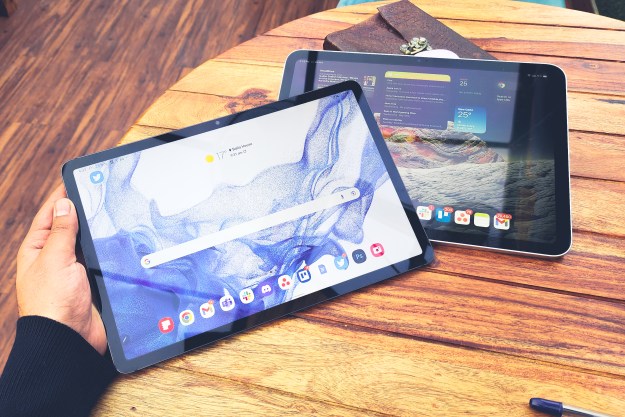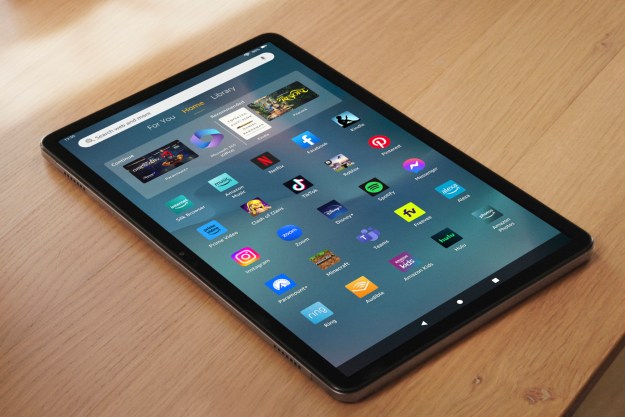Tablets can be great devices for kids since they can play games, watch movies, read books, and a whole lot more. But, you need to be able to protect them from questionable content. The best kids’ tablet you can buy right now is the Fire HD 8 Kids Edition. One of the reasons that it’s our top pick is that Amazon tablets have some of the most comprehensive parental controls around.
Amazon’s parental controls work on any Amazon Fire tablet, so whether you have one of the Kids Edition tablets, a Fire HD 10, or an older Fire tablet, you can still use these controls. In this guide, we’re going to run through how to set up parental controls on your Fire tablet and highlight some of the key features you’ll want to take advantage of.
How to set up parental controls on a Fire tablet
We’ll assume that you’ve created your own profile and signed into your Amazon account on the Fire tablet in question. If you haven’t, then go to Settings > My Account and do so. Now, there are two ways to restrict access on your tablet. This first method is easier and quicker, but we recommend you skip ahead to the second as it’s more versatile.
Using simple parental controls
- You can go to Settings > Parental Controls and toggle it on.
- You’ll have to enter a password. Make sure it’s not something your child could guess.
- By default, this will block Alexa, the web browser, email, contact, calendars, and the camera (Amazon Stores excluding Video are unblocked, so make sure to address that).
- It will also password-protect purchases and videos and block social sharing.
- You can also toggle on Set Restricted Access and choose a curfew when the tablet will be inaccessible without your Parental Controls password.
Using Amazon’s FreeTime and multiple profiles
Instead of using simple parental controls, we recommend creating Child Profiles. You can create multiple profiles to be used across devices and get some help from Amazon restricting content. If you didn’t choose a lock screen PIN or password when you first set your Fire tablet up, then you must start there. This will block your child from accessing your profile or the parental controls menu.
- Go to Settings > Security > Lock-Screen Passcode and toggle it on.
- Please choose a password or PIN that you’ll remember, but make sure that it’s not something your child could easily guess.
- Now it’s time to set up a profile for your child. Go to Settings > Profiles & Family Library and tap Add a Child Profile.
- You’ll have to enter a name and birthdate.
- For children under best to select Use Amazon FreeTime (it’s called Fire for Kids in the U.K.) There is also a Teen Profiles option, recommended for kids aged nine and older.
- Once the profile has been created, you’ll get to choose the apps, games, books, and videos from your content library that you want to allow them to access. As a shortcut, Amazon provides an option to Add All Kids’ Titles. These are chosen based on the age you entered during the profile creation.
- Repeat the process to add as many other child profiles as you need.
When you want to select a profile, swipe down from the top of the screen and tap the correct profile icon. When you choose a child’s profile, you’ll see that the interface changes, and there’s a carousel containing the content you allowed on a blue background. If you choose an adult profile, you’ll be prompted to enter a PIN or password.
You have now restricted access to certain apps and choose the content you want your kids to be able to use. Amazon FreeTime blocks content purchases and in-app purchases by default. It also disables location-based services and social sharing, and it locks the tablet to landscape orientation. But there’s a lot more you can do.
Managing your child’s profile
There are many options in each child profile to give you fine control over precisely what they can and can’t do. Let’s run through the main things quickly:
Go to Settings > Profiles & Family Library and choose the child profile you want to manage.
Tap Set Daily Goals & Time Limits, and you’ll find that you can prevent your child from being able to use the tablet during the night, set Total Screen Time limits, or break down your restrictions by content type. For example, some parents might be happy to allow unlimited reading but want to restrict apps and games to half an hour per day. When the time limit is reached, a message pops up on the screen to tell your child that they’ve reached the limit for the day. You can also set different schedules and limits for the weekend than for weekdays. You can even set Educational Goals, stipulating, for example, that your child must read a book for half an hour before they can access entertainment content.
If you want to add or remove access to any specific content, you can do so under Manage Your Child’s Content. To download a new app or game for them, you’ll need to log into your profile, download and install the app, and then go to Settings > Profiles & Family Library, choose their profile, then tap Add Content > Add Books, Videos, And Apps, tap the app or game you want to add, and then tap Done. You can override the age-appropriate suggestions and grant access to whatever content you want in here.
Under Web Settings in your child’s profile, you can choose whether they can access the web browser. You can also limit web content to Amazon Curated Content, which has been pre-approved based on your child’s age.
You also have the option to restrict camera and gallery access in your child’s profile. They won’t send any photos they take via email or upload them to social media, but you can choose to automatically back them up to Amazon Drive if you want to. Also, ensure that the Enable In-App Purchasing option is toggled off to avoid any surprise bills or micro-transactions.
Now that you’ve set up your profiles and configured them, you can relax, safe in the knowledge that your kids can’t overdose on games or access anything you don’t want them to see. However, they will still have to come and pester you when they want a new game or book. If you want to grant them access to new content that has been filtered and age-appropriate, you need to consider Amazon Kids+.
How to use Amazon Kids+
This subscription service provides access to thousands of books, movies, TV shows, educational apps, and games that have been curated and reviewed to ensure they’re suitable for different age ranges. It caters to kids in the range of 3-12. If you buy a Kids Edition Fire tablet, then you’ll get the first year of Amazon Kids+ for free.
- To activate it, go to Settings > Profiles & Family Library, choose your child’s profile, then tap Subscribe To Amazon Kids+. If you’re already subscribed, it will say Manage Your Subscription instead.
- You can select a Single Child Plan or a Family Plan, which will cover up to four children.
- Amazon Kids+ costs $3 per month for one child, $10 per month for a family, or $99 to pre-pay for a family for a year in advance with a free trial month.
- If you’re already a Prime member, the cost is just $2.99 per month for a single child or $6.99 per month for the family. You can also choose to pre-pay for a family for a year for $69.
- If you look in Settings > Profiles & Family Library, choose your child’s profile, and tap Smart Filters, you’ll see that you can set an age range, which will determine what curated content they have access to via Amazon Kids+.
The beauty of FreeTime Unlimited is that your children can browse, get new apps and games, read books, and access all sorts of video content without you having to lift a finger. All of it is age-appropriate, there’s a lot of educational content there, and they can choose things easily based on characters they like.
Reviewing your child’s activity

One final thing worth mentioning is the ability to review what your child has been doing. If you allow web access, you can go to Settings > Profiles & Family Library, choose your child’s profile, and tap View Your Child’s Web History to see all the web pages they have viewed. There’s also a handy extra tab entitled Attempted, which shows you any blocked sites they tried to access.
If you signed up for FreeTime Unlimited, then you can visit the Parent Dashboard. This gives you interesting insights into exactly what your child has been doing on their Fire tablet. The time they spent on different activities is broken down into Books, Videos, Apps, and Web, so you can see at-a-glance how much time they’ve spent in each for today. Choose one, and you’ll see a complete breakdown of the time they spent on each app, game, book, video, or web page.
For some pieces of content, you’ll see a small orange speech bubble on the right. Click on that, and you can get a summary of the app or video in question and find a set of questions or potential discussion topics to get your child talking about that activity. It’s an excellent prompt to help you engage with them about what they’ve been doing and helps round out the superb suite of parental controls that Amazon has to offer.
Editors' Recommendations
- The 6 best tablets for kids in 2024
- Best tablet deals: iPad, Samsung Galaxy Tab, Fire, and more
- How to root Android phones and tablets (and unroot them)
- How to use Android Recovery Mode to fix your phone or tablet
- Amazon’s kid-friendly Fire HD 10 tablets bring AI-powered games









